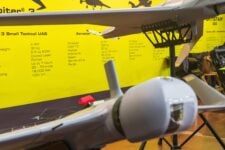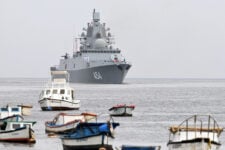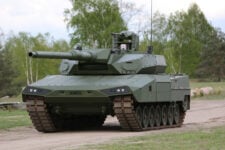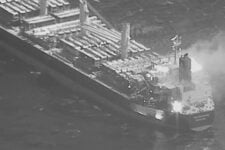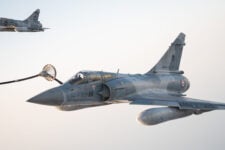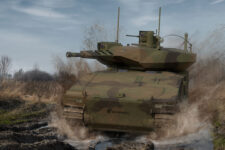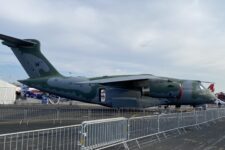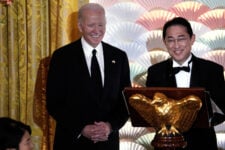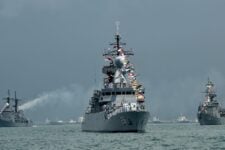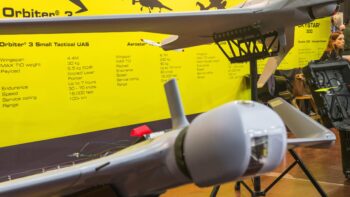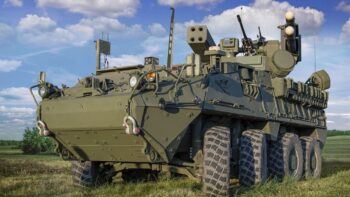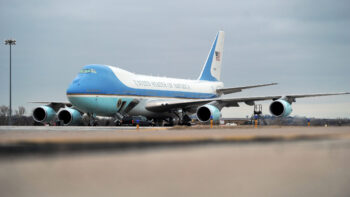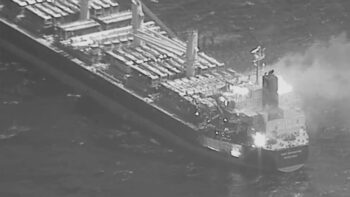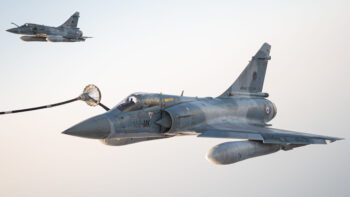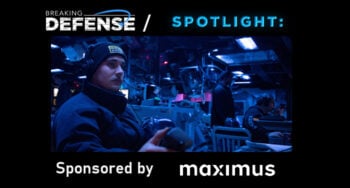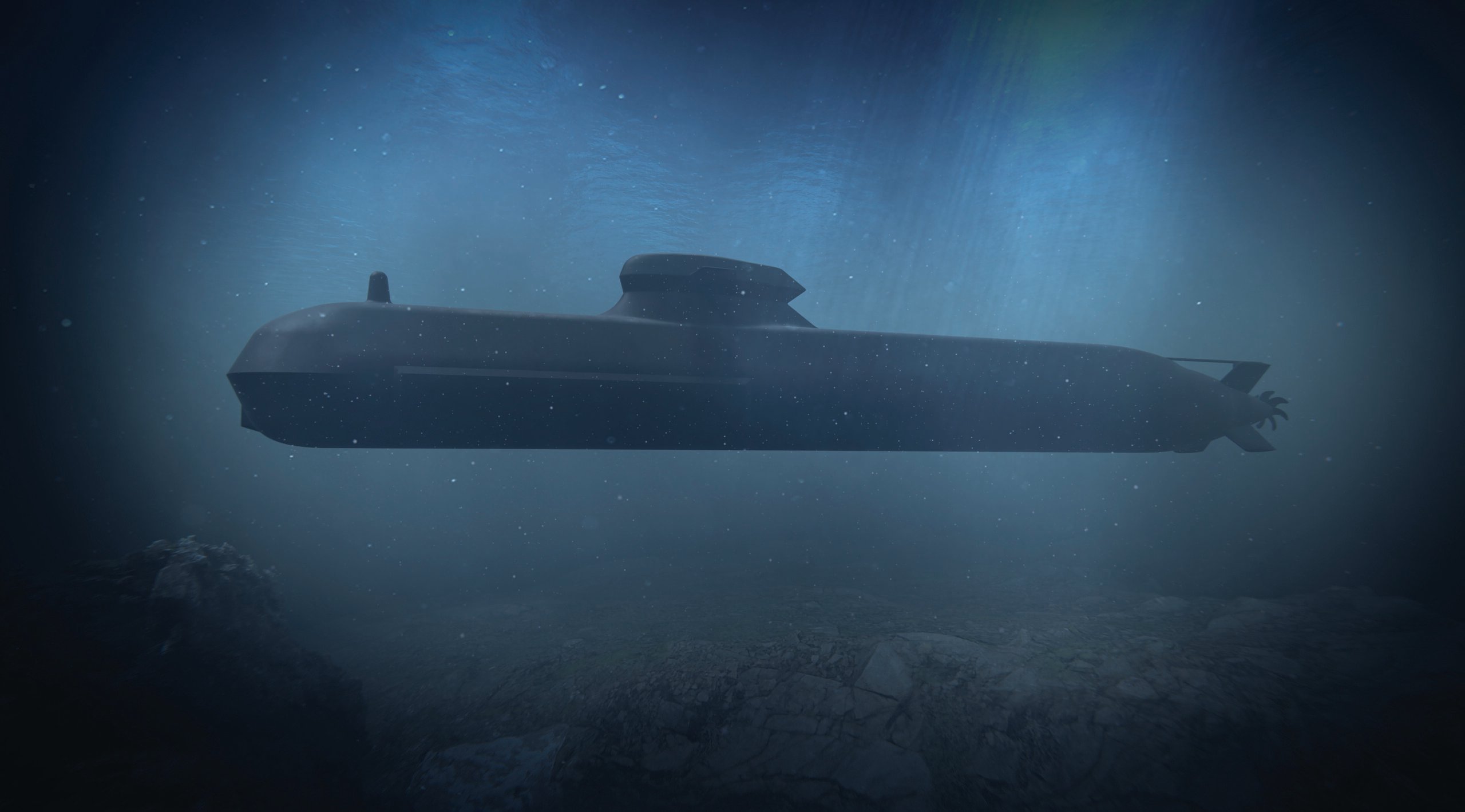
Saab plans to offer its Expeditionary submarine, also called C71, for Canada’s future submarine program. (Graphic provided by Saab.)
KARLSKRONA, Sweden — In this quiet coastal town in the southeast of Sweden, hull sections of two Blekinge-class submarines sit perpendicular to each other on dry land at Saab’s Kockums shipyard. The vessels bear few identifying marks, save for the large holes on one section reserved for the boat’s multi-mission portal. Company officials say for security reasons they can’t identify which boat is which.
Visible from just outside the building is the Baltic Sea, the hunting ground the two new subs are slated to begin patrolling when they join the Royal Swedish Navy’s fleet in 2027 and 2028.
But even seaside on a sunny day here, at the top of mind for most company officials is a larger variant of these submarines, a vessel they hope will one day troll the open ocean nearly 4,000 miles away for a different military, and for a hefty price tag.
Following a disappointing loss earlier this year in a Dutch competition, Saab says it will double down on its latest submarine design, C71, for the Canadian Patrol Submarine Project, a program that has already captured the attention of numerous shipbuilders from around the globe with a reported price tag of at least $60 billion Canadian dollars for up to 12 submarines.
Though a recent Canadian defense policy document was unclear about how many subs Ottawa will pursue, the competition is already gearing up and is expected to be fierce. The Royal Canadian Navy is in talks with companies from South Korea, Japan, Spain, Germany, France and Saab’s Kockums here in Sweden. (Breaking Defense, like other outlets, accepted travel accommodations from Saab for this trip.)
But a top Saab official says he’s keenly aware that even if the C71 is the best sub, other factors could torpedo the company’s bid.
“It will come down to very much a political play again,” said Simon Carroll, president of Saab Canada, who traveled to Sweden to accompany reporters on a tour of the shipyard.
“If you think fighters are political, submarines take it to another level,” he added, alluding to competitions in the Czech Republic, Finland and other European countries that chose the American F-35 Joint Strike Fighter over Saab’s Gripen.
Beyond The Baltics
As Saab tells it, their submarines, going back 100 years with a new design being produced once per decade, have been finely tuned to perform in the Baltic Sea, the primary area of operations of the Royal Swedish Navy and many of Sweden’s neighboring countries. That is true of the A26, the sub design on which the Blekinge-class submarines are based. High-density commercial traffic, varying levels of salinity and the serious threat of thousands of decades-old mines on the seabed floor all make operating in the Baltics difficult.
But those concerns are not relevant to Canada, which will want to make extended trips through the open oceans of the Atlantic and Pacific.
“What Canada wants is something that’s going to be able to travel from either Esquimalt on the west coast or Halifax on the east coast, up to the Arctic, operate for 21 days and then come back again,” says Carroll. “An A26 can’t do that.”
For Canada, Saab will propose its C71, also known as the Expeditionary submarine, which is currently deep in the design stage.
Per-Ola Hedin, Saab’s chief engineer for the A26, said the C71 is envisioned to be 80 meters long, eight meters in diameter and will displace 3,300 tons. (By comparison, the A26 is roughly 66-meters long, six-and-three-quarters meters in diameter and displaces approximately 2,000 tons.) Hedin said that while the C71 has not yet been built, the design is relatively far along because Saab made a similar submarine proposal to the Royal Netherlands Navy. But the Dutch passed on Saab’s offering in March, instead choosing France’s Naval Group to build four Barracuda-class diesel electric submarines to replace that country’s Walrus-class boats.
Notably, premiere German submarine maker Thyssenkrupp Marine Systems, an expected contender in any future Canadian competition, also responded to the Dutch call for tender back in 2017. Canadian Defence Minister Bill Blair told reporters in Washington last week that his German counterpart approached him about joining the German-Norwegian Thyssenkrupp-made 212CD class submarine package. “Frankly, I’m pleased and we’re hearing from many others as well,” he added.
RELATED: Canada Weighing International ‘Collaboration’ On Future Subs
Hedin said the C71 is designed to hold a regular crew of 30 people as well as 15 additional personnel such as special operations divers or intelligence analysts. It can be configured to hold either six torpedo tubes or four tubes and the multi-mission portal. Company officials said when they designed the multi-mission portal, they were attempting to future-proof the sub: The empty spaces at the front of the boat have no prescribed use, but rather were made to give customers options depending on their mission sets.
Should the C71 come out on top in the Canadian competition, it will join a host of older Saab subs stalking the world’s oceans for foreign clients. Home country Sweden currently operates the Södermanland and Gotland classes, but other militaries include Singapore (Archer class) and certain boats in Australia’s fleet (Collins class).
A point of pride for Saab, Hedin explained, is the company-run shock testing done for certain boats.
Shock testing refers to when a ship, or in this case a sub, is subjected to the g-force it could experience in combat. It’s a must-pass test for any combat vessel but is usually conducted by a country’s navy. Saab does their own testing — and claims to be the only company with that history.
A Saab spokesman told Breaking Defense whether C71 would undergo company shock testing is dependent on customer requirements, but that Saab employees would climb aboard their own vessel for such tests is something officials view as another selling point in their favor.
A video shown to reporters documents a past test where following a brief countdown, the water erupts from a nearby explosion. Quick camera cuts show various components inside the submarine shaking under the impact but remaining stable.
“This is cool,” Hedin remarks, after playing the clip twice, grinning.
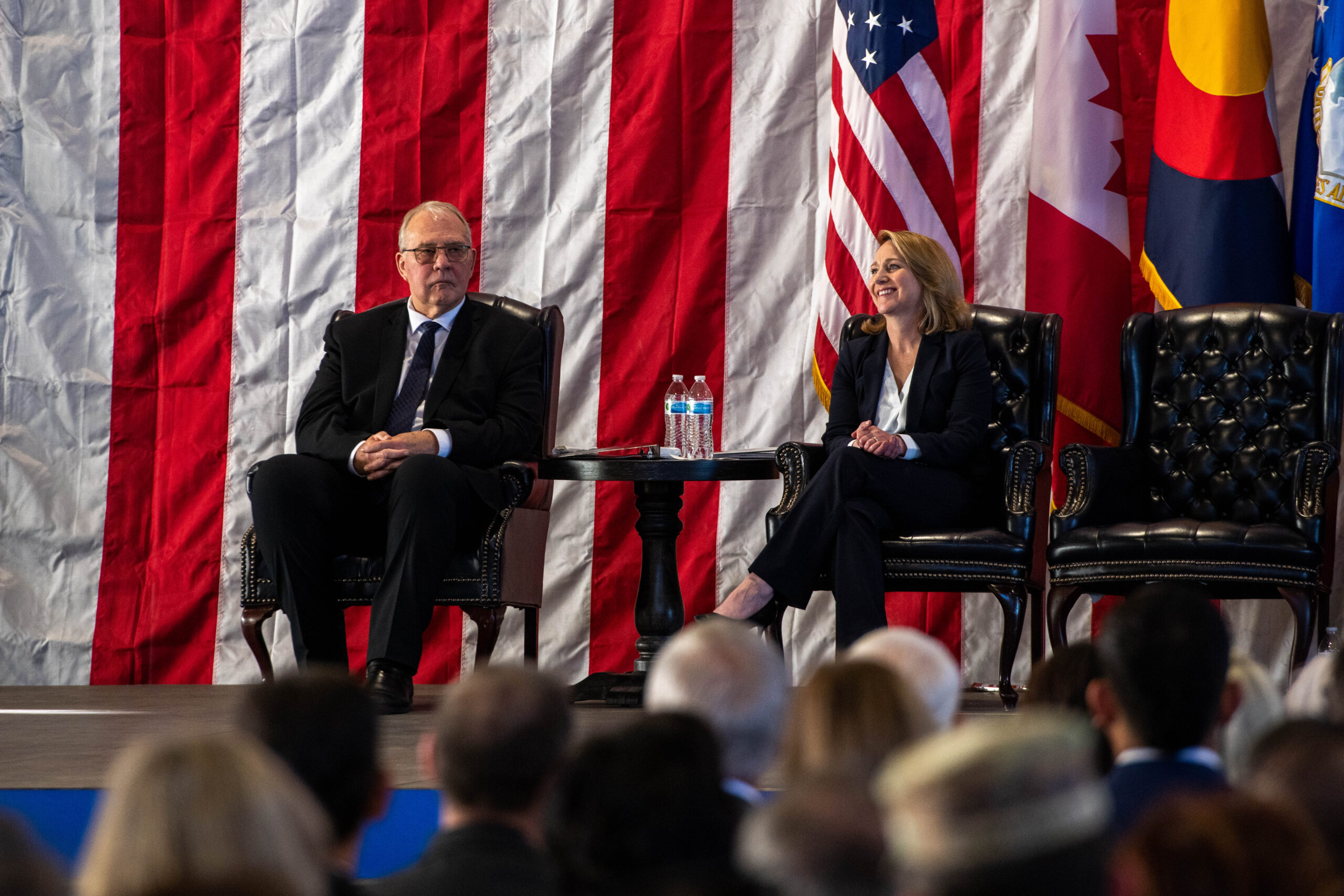
Canada Minister of Defense Bill Blair and Deputy Secretary of Defense Kathleen H. Hicks attend the U.S. Northern Command and North American Aerospace Defense Change of Command ceremony at Peterson Space Force Base, Feb. 5, 2024. (DoD photo by U.S. Air Force Senior Airman Cesar J. Navarro)
All Politics Is Local, Or American
Saab’s Chief Executive Officer Micael Johansson has historically not shied away from publicly calling attention to the international politics sometimes at play in major defense acquisition deals — particularly when things have gone south for the Swedish firm.
And despite being in the early stages of Canada’s submarine program, Carroll suggested he was wary of potential influence coming from one of Canada’s close allies: the United States.
“We need to have a bit of urgency applied to a competitive, fair and transparent procurement process,” said Carroll. “You can read between the lines as to how much of that means political, but let’s face it, the US is going to have a say in what submarines Canada gets.”
The American and Canadian militaries work closely together, and Carroll suggested that interoperability between their respective submarine fleets could be an important factor for Canada’s choice of sub.
He added that he’s “certainly not naive enough to think that that is not going to be a consideration when Canada makes its decision regarding submarines.”
When it comes to the politics of international defense acquisitions, the money invested in these deals translates into geopolitical capital. Beyond the platform, major defense deals can signal growing military and diplomatic relations.
As such, Saab clearly hopes politics can cut both ways. Carroll argued that Canada’s choice should be more than just a transaction; it should reflect a partnership between the two countries. He highlighted Sweden and Canada’s shared progressive values and need to focus on operating in the arctic as two examples of commonalities.
A spokesperson for the Royal Canadian Navy did not directly address questions of political influence on the submarine program, but they did acknowledge that interoperability with the United States is a “key consideration” to ensure Canada’s naval fleet “has the increased and modern capabilities needed to detect, deter and defend against threats to or attacks on Canada and North America in partnership with the United States, including through NORAD.”
“This project is in the early stages of exploring the capabilities that the RCN requires of Canada’s next generation submarine and more details will become available as these efforts progress,” they continued.
It wouldn’t be the first time Saab has felt the deck stacked against them in international competitions. Johansson in March told Breaking Defense that NATO had rushed its decision to replace the E-3A Sentry Airborne Warning and Control System with the E-7 Wedgetail.
“I didn’t like that [procurement] process,” Johansson said at the time. “We were asked to put in our offer, and then they [the NATO Support and Procurement Agency] didn’t really go into discussion with us, because they had already decided they had to go and buy Wedgetail, and they had to do it quickly because otherwise they wouldn’t get capability until 2032.”
He has voiced similar frustrations in the wake of the F-35 Joint Strike Fighter being selected in various international competitions over the company’s Gripen — including, in 2022, Canada. While speaking to reporters in Stockholm, Johansson said he was optimistic that Sweden’s entry into NATO might level the playing field for Saab and give Sweden a seat at NATO’s table for discussing state-of-the-art technologies and the requirements for the alliance.
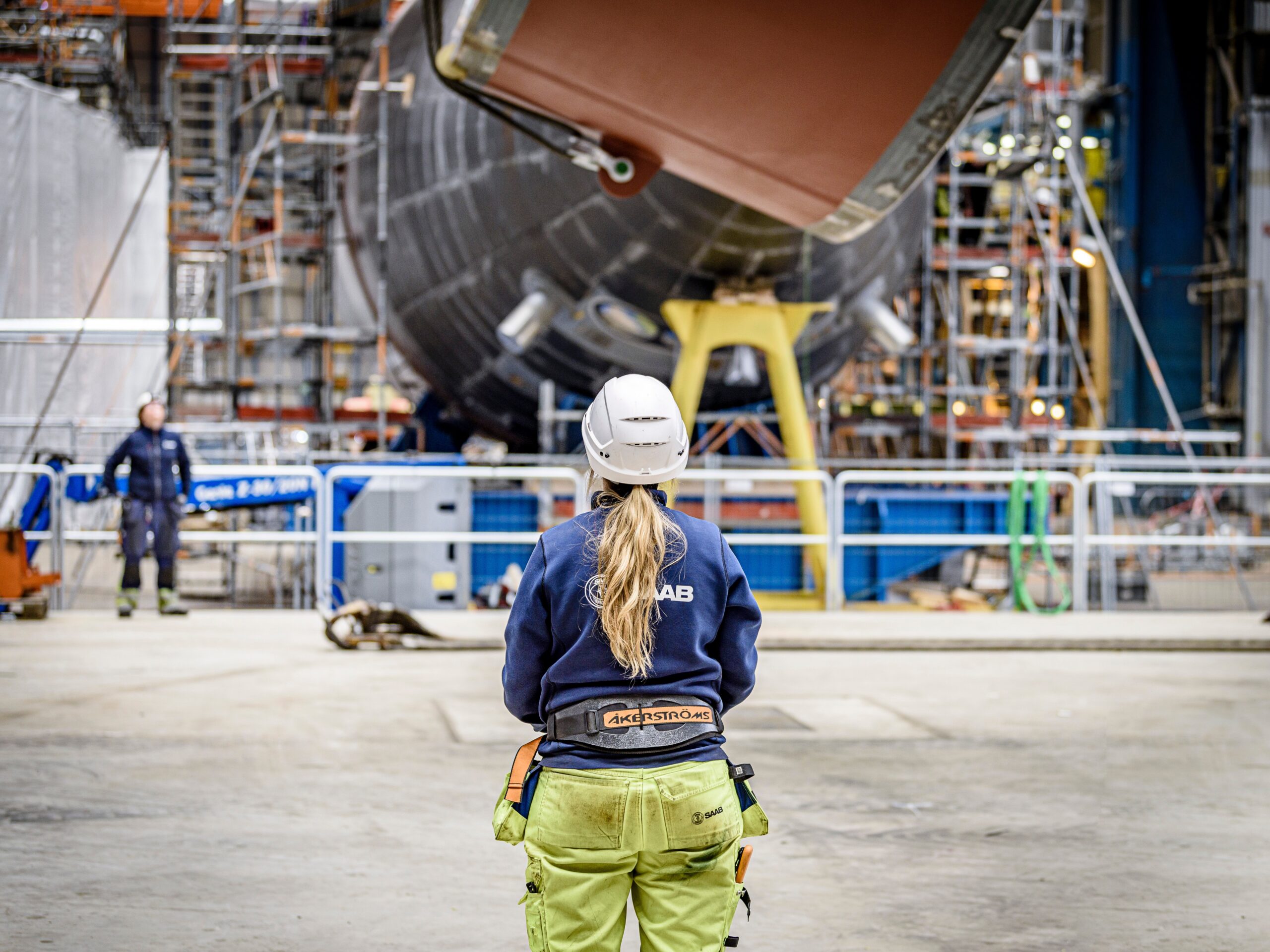
A Saab worker looks on as a submarine is worked on at Kockums shipyard in Karlskrona, Sweden. (Photo provided by Saab.)
A Piece Of The Pie For Canada
In addition to the questions surrounding international politics, there also remains a degree of uncertainty inside Canada around the submarine program. The country’s recent Defence Policy Update was vague about the prospect of a new submarine class, promising only to “explore options” for expanding the fleet.
Blair told reporters in Washington last week that he now regrets that language and did not intend to be “wishy washy.” The minister added that he’s “pretty confident we will get to a determination of our path forward on underwater surveillance submarines,” but declined to give a timeline for when that might be.
Replacing the subs “is necessary. It is, I might suggest, inevitable,” Blair said. “One of things we’re hearing from our armed forces, but also hearing from industry, they need the clarity and certainty of direction, and then commitment. And so I hope in the DPU, I provided them with direction. And I’m working hard on getting the commitment.”
It’s also unclear whether Canada will include the future submarine program within its national shipbuilding strategy. That policy aims to revitalize the country’s shipbuilding industry by placing an emphasis on building new warships and auxiliary vessels at one of three shipyards: Irving Shipbuilding, Seaspan Vancouver Shipyards or Chantier Davie Canada.
If the new sub program is included, it could mean that foreign companies vying for the work would come under enormous pressure to team up with a Canadian shipyard to ensure the subs are constructed in Canada.
Carroll said he thinks Canada will not include the sub program in the strategy because constructing new facilities to build submarines would take a significant amount of time and necessarily delay the boats’ final delivery.
“Having said that, there are shipyards in Canada who will want their piece of the pie,” he added. “So, you’ve got to work out who they are, and we’ve spoken to all three of them.”
UPDATED 5/27/2024 to clarify the types of submarines in Sweden’s fleet.
Israel’s Aeronautics introduces loitering munition, surveillance drone combination
The new loitering munition, Orbiter 2 LM, is envisioned as working with partner surveillance drones to condunct strikes, a company executive told Breaking Defense.
